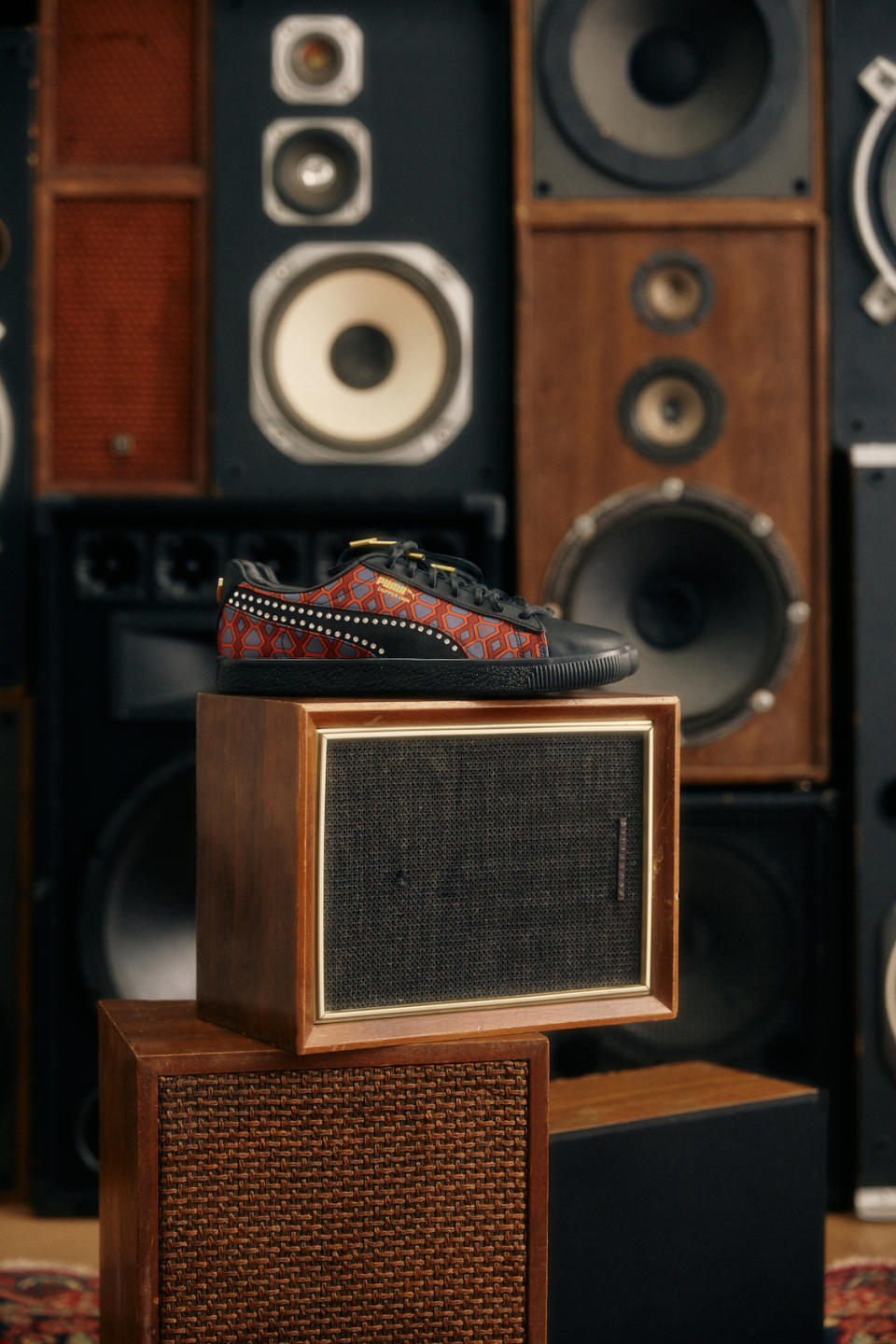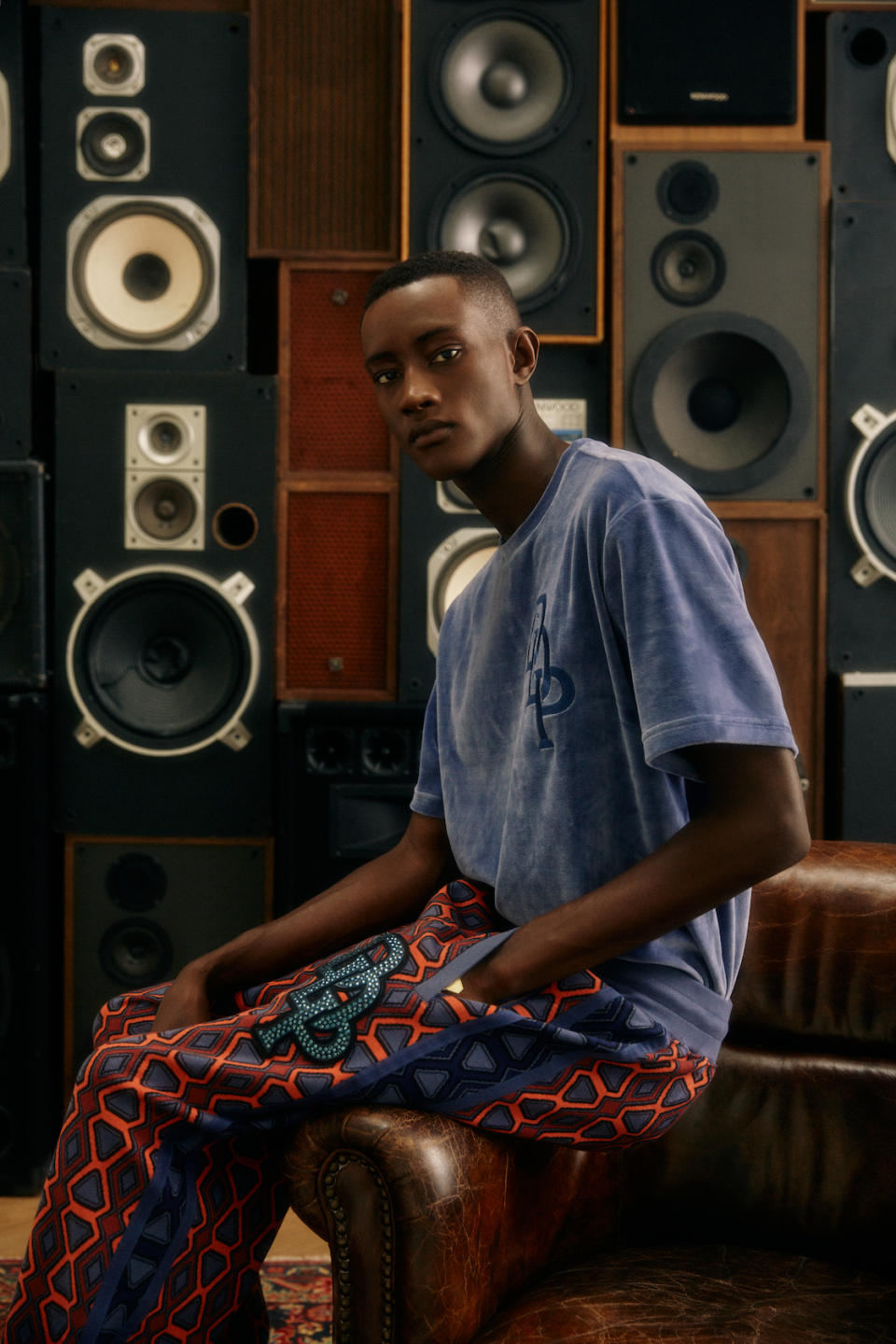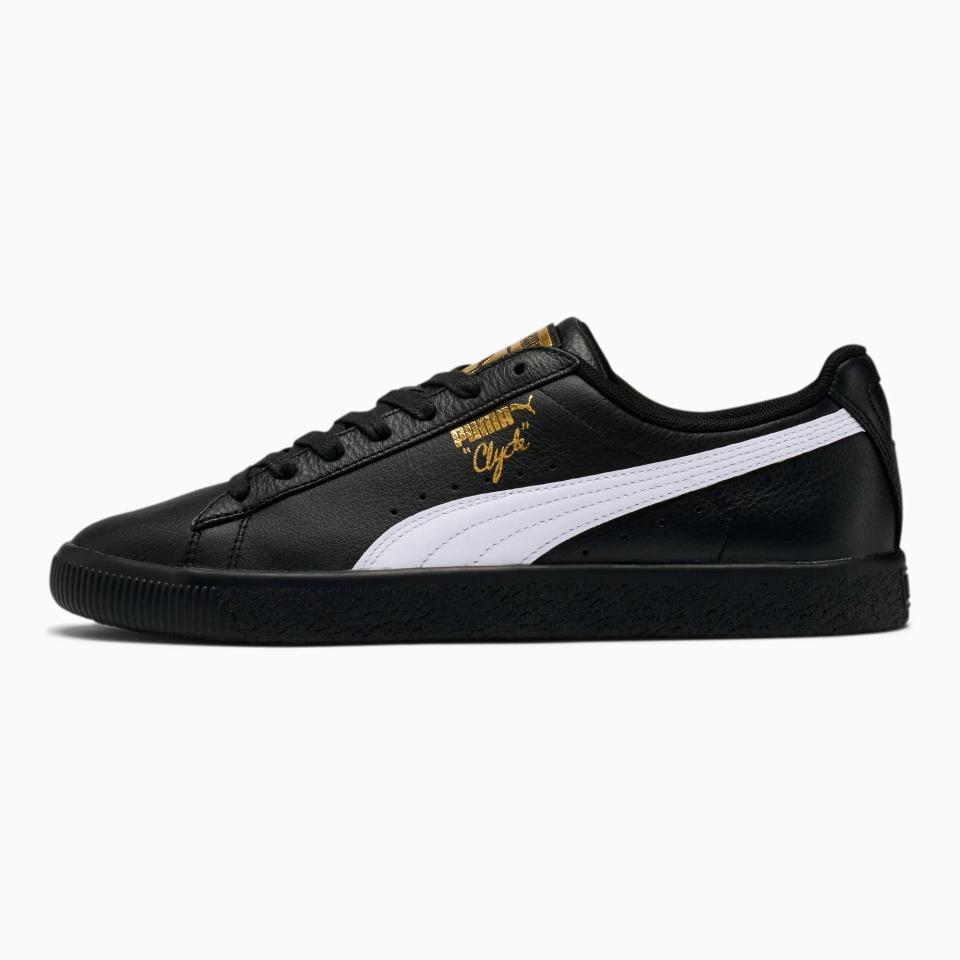Dapper Dan Says His New Puma Collaboration Is ‘For the Communities We Came Out Of’

If you purchase an independently reviewed product or service through a link on our website, Rolling Stone may receive an affiliate commission.
A few weeks after debuting the looks at New York Fashion Week, Puma and Dapper Dan have launched their first collection. Billed as a tribute to hip-hop culture in the Eighties, instrumental to the rise of Dan in Harlem, the collection is a four-piece capsule that includes a bold take on the Puma Clyde to celebrate the sneaker’s 40th anniversary.
More from Rolling Stone
How to Watch Thursday Night Football on Amazon: NFL Live Stream 2022
RS Recommends: Sony's Famous Noise-Cancelling Headphones Get a $122 Discount Online
How to Watch 'Selena Gomez: My Mind & Me' Documentary Online on Apple TV+
The collection is just the beginning for the fashion pioneer and sneaker brand — Dan says he has long-term goals with Puma, emphasizing his desire to keep evolving streetwear and nurturing young people’s interest in fashion.
“The generation that’s coming up now doesn’t realize that prior to me being a fashion designer coming from the corner, this was a different game,” the designer tells Rolling Stone. “Now, so many young guys who used to be gangstas are walking up to me like ‘Yo Dap, you know I got my own line now, you know I got my own brand now.’ We need to keep nurturing that.”
Dan says he talked to many people before joining Puma, including the brand’s President of Basketball Operations, Jay-Z. “I said, ‘Listen, Jay, you know we have to represent the communities that we came out of,’” Dan says. “With all the programs we have now to bring people of color into the industry, one of my biggest concerns was that they weren’t bringing people in like myself and Jay-Z—people who came from the corner…I wanted to keep those channels open by which we can create the next Dapper Dan or the next Jay-Z.”
Rolling Stone connected with Dapper Dan after the collection’s exclusive launch at KITH to talk about the conversations he’s had with Jay-Z about the future, why he wants to ‘elevate’ athleisurewear and the mantra he lives by in his work and daily life.
What’s been the best part about working with Puma?
The best part of this has been the reach out by Puma and all the things they allow me to do as part of the marketing. The marketing is amazing. I never thought I would be able to collaborate with a brand that would let me have so much hands-on when it came to the marketing. So that’s a big deal. That’s what I’m most excited about.
Within that marketing framework, you’d have to include the flexibility they allowed me to use with the puma. To change the puma from a passive cat to an aggressive cat is exciting. It allows me to talk about exactly my approach to fashion: like the ferociousness of a puma, stampeding out of the jungles of the street and making it onto the runways. That’s the biggest part for me.

Dapper Dan x Puma
I know you’ve talked before about “elevating athleisurewear.” Why do you think that’s important?
It started out with a campaign by myself, ever since [the death of] Trayvon Martin, to de-stigmatize the way streetwear can be seen at times. Nothing does that more than the hoodie. My first approach to it was when I did a campaign with the Gap. You know, it’s always a hoodie with an ascot or silk scarf…something to elevate it. Streetwear is here to stay regardless of what people think. It’s here to stay. It’s such a big part of the community that I come out of. I wanted to be able to represent us on all levels. The more luxurious I can make this, the more I can elevate this, it allows me to elevate the culture as well.
Tell me a bit about your relationship to June Ambrose, who just had her first NYFW show as Puma’s creative director.
June is amazing. June is always on beat when it comes to styling and everything of that nature. I couldn’t ask for a better partner going into this. I was happy she was overseeing everything. Not only was June a big part of me signing off on this, it was [also] Jay-Z and Emory [Jones]. I felt like I was tying myself in with people who understood my journey and where I wanted to go.
Have you and Jay had conversations about working with Puma?
We’ve had that conversation and we continue to have those conversations. They’ve given me all the leverage that I need going forward. I said, “Listen, Jay, you know we have to represent the communities that we came out of.” I had a big talk with them, Jay and everybody, about this. When you look around, what’s happening with streetwear and how it’s being elevated, and the way people see it and the people who they see…with all the programs we have now to bring people of color into the industry, one of my biggest concerns was that they weren’t bringing people in like myself and Jay-Z—people who came from the corner. They were picking people who are what I call “privileged people,” even like my son. I wanted to keep them channels open by which we can create the next Dapper Dan or the next Jay-Z. If the culture came from the streets, why can’t we keep those channels from the streets open. That was my biggest ask concerning the brand.
I told Jay, “You see Gucci allowed me to open up an atelier and bring luxury to Harlem?” I said, “Let’s do the same thing with athleisurewear.” But let’s make contact in a way that’s never been done before. What does that mean? We need a laboratory by which we can bring about the next Dapper Dan or the next Jay-Z. So why don’t we have a space in Harlem and we call it the “Pumatory” where we can have young people coming in expressing their ideas and I can be giving them information about what it takes. So when [Puma] agreed with that, that was all I needed to hear. When they signed on to that, which we’ll be opening soon and we just had a discussion about it today, I was super excited. With the “Pumatory,” I’m yelling to the community, “Come get this man.” Me and Jay have opened up these channels, it can happen. I’m sending that message to the grassroots, to the street corners as well as I’m letting brands know. Look, me and Jay come from the corner. Don’t block the corners.
Why choose to release this at KITH?
I told Puma, I said, “I’m not going downstairs. My intention is to bring y’all upstairs. So let’s meet in the middle.” KITH personifies that level of streetwear that makes it acceptable on a luxury level. It’s an ideal place to say, “This is what this is now. We’re bringing this upstairs. We’re not going downstairs.”
Have you and [KITH founder] Ronnie Fieg ever met?
Yes, absolutely. Great guy with a great story. Just going and seeing his store was amazing. You know I had to read his whole story to see how it came about. He’s a hard worker, he grinded from the bottom like I did, even though he had a little bit of help. But he’s a grinder.

This is Rolling Stone, so I have to ask you a music question. Are there any artists you think have a great sense of personal style?
In the Eighties when I started, I’m going to name three different rap groups [starting with] BDP, Boogie Down Production. I listened to them, how they feel about their music…BDP was involved in rasta rap at the time. We sat down, listened to the lyrics, I saw where they wanted to go, so all the outfits I made for them were made in the rasta colors with a rasta feel to it.
The next ones I like to talk about are the Jungle Brothers. Jungle Brothers were on this afrocentric thing. They talked about revolution and all of that. What they wanted was outfits that made that statement. So I made outfits for them in red, green, and black.
And then Eric B. and Rakim came [and] you know Eric B. is a swag guy and Rakim is into his Five Percenter thing. So what I did was, I swagged out Eric B. and I made Rakim’s outfit with the Five-Percent Nation sign on the back.
What I look for in an artist when I dress them is always, “What do you want to say?” To me, the further we get away from that, the further we get away from where this all comes from. That’s why I say I have to have the “Pumatory” so it can be an extension of what’s reflected from the street. When people come to me about Gucci, I say, “Remember one thing: This is Gucci, but it has a whole lot of Burger King to it. Because you can have it your way.” When you ask me about artists, I’m interested in an artist that knows where they want to go, are involved in their lyrics, and together we translate what that look should be.

Puma Clyde Sneakers
After your first release in this partnership, what do you envision for the future of Dapper Dan and Puma?
This whole idea came because I was lost and then found myself. To find myself, I went to Africa. I had to go to Africa to find myself. That’s where the whole idea of fashion for me was born, and when I came back, what did I do? I had to study religion, religion took me to myth, and myth took me further back to symbols, and it was through symbols that I mastered the craft of fashion. I took western civilization symbols from these brands and mastered them.
Next week, I’m going back to Africa (I’ve been going back and forth) and I need to do something that’s really significant. What I hope to do is incorporate symbols that have more relevancy to those who I represent. And bringing back symbols, powerful symbols that represent who we are. It ties us all together. I’m just giving you a hint. I initiated it with LL Cool J, when he did the recent show, and you see his jacket that I made, and you look at the symbols. You strip these brands of their symbols, and none of them would accelerate. It’s the symbols. We need powerful symbols associated with powerful messaging. I’m going back to Africa next week. I’m doing my second masterclass in Lagos, Nigeria, and the timing couldn’t be better.
All this started when I went to Africa and I came back, and as soon as I started opening my shop, it was the birth of a new musical genre, which is hip-hop. And now I’m going back to get these symbols. I get the chance to incorporate that altogether and take these symbols global. My long term goal is to level the playing ground where we all respect each other. I don’t think there’s a better way to do it than for us to love our own symbols as much as theirs.
You said once that “Your character builds your brand.” What are those important characteristics to be successful in fashion?
I have this thing with my grandkids and my kids. It’s called P.O.S. It stands for “power over self.” You must first master yourself before you can master your craft. Self-conquest, there’s nothing that rises above that.
Best of Rolling Stone

 Yahoo Movies
Yahoo Movies 
